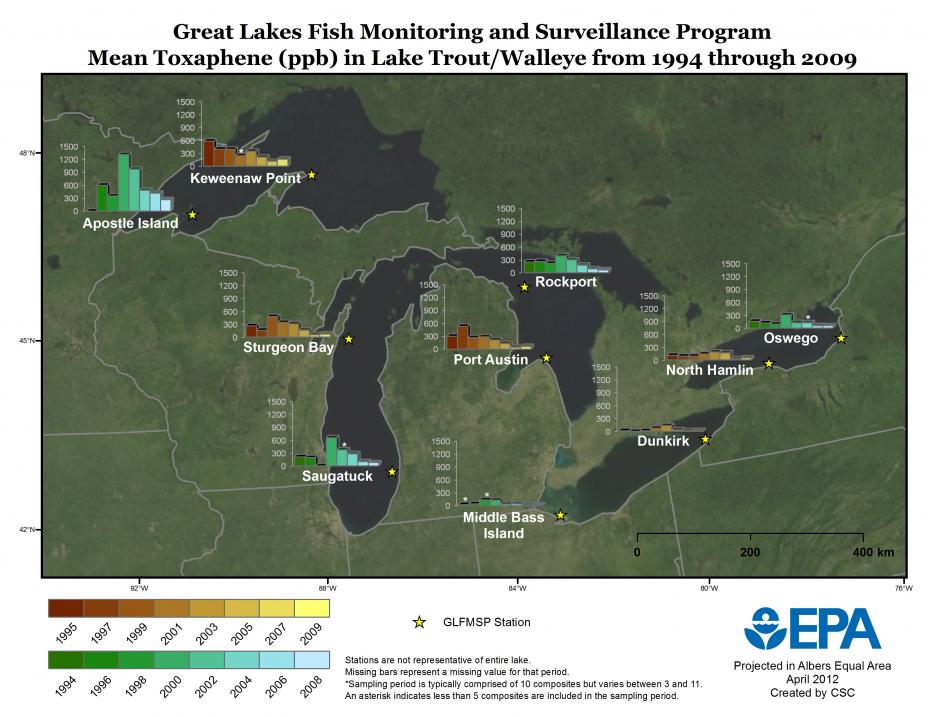Great Lakes Open Lakes Trend Monitoring: Toxaphene
 Mean toxaphene (ppb) in lake trout/walleye from 1994 through 2009. Click to open larger map.Toxaphene is a synthetic pesticide that was banned in the United States in 1990. Decreases in Toxaphene concentrations have been observed throughout the Great Lakes in all media following its ban in the mid-1980s. A study on Toxaphene trends in Great Lakes fish show that concentrations remain the highest in Lake Superior (up to ~480 ng/g) and lowest in Lake Erie (up to ~50 ng/g) (Xia et al.). Concentrations of Toxaphene in Lake Trout and Walleye continue to exhibit exponential temporal declines in all of the Great Lakes; however, concentrations appear to level off starting in 2007 (Xia et al).
Mean toxaphene (ppb) in lake trout/walleye from 1994 through 2009. Click to open larger map.Toxaphene is a synthetic pesticide that was banned in the United States in 1990. Decreases in Toxaphene concentrations have been observed throughout the Great Lakes in all media following its ban in the mid-1980s. A study on Toxaphene trends in Great Lakes fish show that concentrations remain the highest in Lake Superior (up to ~480 ng/g) and lowest in Lake Erie (up to ~50 ng/g) (Xia et al.). Concentrations of Toxaphene in Lake Trout and Walleye continue to exhibit exponential temporal declines in all of the Great Lakes; however, concentrations appear to level off starting in 2007 (Xia et al).
Continued monitoring of toxaphene in top predator fish should confirm whether toxaphene concentrations have reached a steady state in Great Lakes fish.
